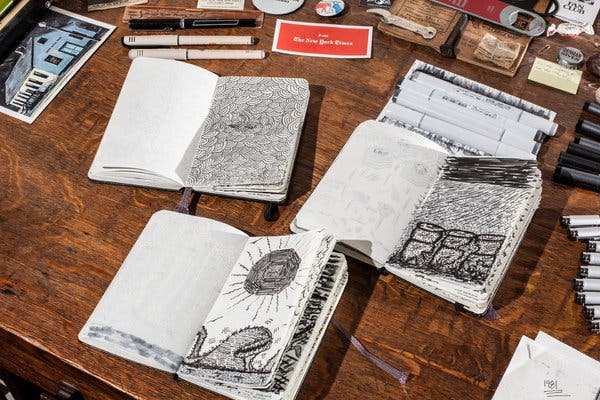My father is dying, besieged by both emphysema and a metastatic colon cancer that’s migrated to his lungs. I shudder in recognition because I’ve nearly been killed twice by raging diseases: An unusually aggressive prostate cancer, and an uncontrollable ulcerative colitis.
What haunts Dad and me all these decades later, as we help each other through our illnesses and as he goes in and out of the hospital, an especially dicey place to be in the current pandemic, is the factory where we worked in my hometown that cleaned industrial 55-gallon steel drums. The federal government shut Kingston Steel Drum in the early 1980s and designated it a Superfund hazardous-waste site, an Environmental Protection Agency “hot spot” that is still being monitored today.
Squatting in a gravel pit off Route 125 in Kingston, N.H., Kingston Steel Drum scoured and reconditioned drums for all kinds of industries. We handled barrels of paint, motor oil, pesticides — oddly, those drums always smelled so sweet — and chemicals with multisyllabic names we couldn’t even begin to pronounce.
Any links between those chemicals and our illnesses remains uncertain. The evidence tying pollutants to disease is a complex science. Still, the factory preys on us. So much, in fact, that I’ve obsessively filled sketchbooks with my visual memories of the place.
My father busted it there, off and on, from the late 1960s till the plant got shut. I started there in the summer of 1974, a wick-skinny 16-year-old. Each day we sweated it out, working alongside guys who had names like Lurch, Dirty Willy and Wolfman (who, disappointingly, had a brother named Bruce), snorting toxic smoke, chemical fumes, black dust. Our eyes smarted, watered.

Dad slammed drums in and out of the blaster, a bellowing beast that flensed 55-gallon steel drums to bare metal by bombarding them with steel shot. Dust devils reeled and squalled as shot pummeled the filthy barrels. All my father wore for protection was a pair of plastic goggles. Respirators, in those days, were for sissies.
When Dad got home from work each day, my mother used a magnet to draw specks of steel shot from his eyes, ears and nose as he hacked up the day’s black work into his handkerchief. When he was hospitalized in 1980 with a work-caused lung infection, his doctors first thought he had tuberculosis.
One of my jobs was to climb to the factory roof and clean the paint-booth stack. If it wasn’t regularly scoured, there was a good chance it’d catch on fire. So I squirmed my skinny boy-bones inside that black throat — no respirator — and brooded upon the industrial void. Rasp-scrape, rasp-scrape, rasp-scrape. Chemical crust and particulates of paint stuck and tumored inside that chimney. Rasp-scrape, rasp-scrape, rasp-scrape.
After one dark hour I’d snake back out the stack, then pound that metal shell: Batter it, hammer it, crater it, try to cave in its steel skull. My goal was to harvest the last of the soot, the black dust.
After a day of hard and dangerous work, we’d wash up using MEK solvent. Methyl ethyl ketone is clear and carries a sweet acetone scent, almost butterscotch. But breathing in too much, I later learned, can carry violent side effects: dizziness, headache, vomiting and blacking out. Even so, just a couple pumps of that stuff, and we were spotless.
As a curious and rawboned kid, I’d sometimes roam the ravaged sandpit behind the factory. It struck me as being some atomic bomb sculpture-scape from a 1950s monster movie. And I was startled by the colors of the ghastly pools that seemed to percolate from the earth: sulfur and cobalt, copper and chrome, cinnabar and plague-viridian.
Then there was the Bleak Lagoon, that bleeding manmade pond, its surface all braids and scales of paint and oil, caustics and solvents. It was all silt and slurry, scum and sludge. All this lethal offal seeped and oozed into the ground, into the rills and runnels that flowed beneath our town, where we all drank well-water.
Though K.S.D. is long gone, the land made Superfund-clean, a creek still runs through the south side of the site. It’s where the men used to cool their beer in summer, and it still flows under Route 125 and into a 23-acre marsh that eventually gives way to Country Pond, where people fish, swim and own waterfront cottages. Caustic rinse water was dumped for years into a dry well next to that creek, where the trees died and no birds sang.
Along with K.S.D., for a short time in the late 1970s, a company called Ottati and Goss “processed hazardous materials brought to the site in drums,” according to E.P.A. documents.
Throughout the entire site the E.P.A. found volatile organic compounds, polychlorinated biphenyls (PCBs), and high concentrations of metals and cyanide. The creek, groundwater and the marsh were also contaminated. Arsenic, nickel, iron and manganese were discovered in plumes that flowed into the marsh and, eventually, into Country Pond, where residents in the 1970s reported fish kills.
Now, decades later, there are fresh worries that water near the site is contaminated by PFAS, a ubiquitous family of chemicals that can be found in nonstick cookware, stain-resistant rugs, firefighting foams and other common products. PFAS have been linked to a litany of serious health problems, including autoimmune diseases (like ulcerative colitis) and some cancers.
Today, the grave of the former Kingston Steel Drum looks unexceptional from Route 125, just an old gravel pit built up with fill. But when I talk on the phone with my father these days, his once-booming voice often lapses to a rasp, and I think back to our days in the factory.
Me and Dad, we’re still haunted by Kingston Steel Drum.
Video by Bryan Anselm for The New York Times
